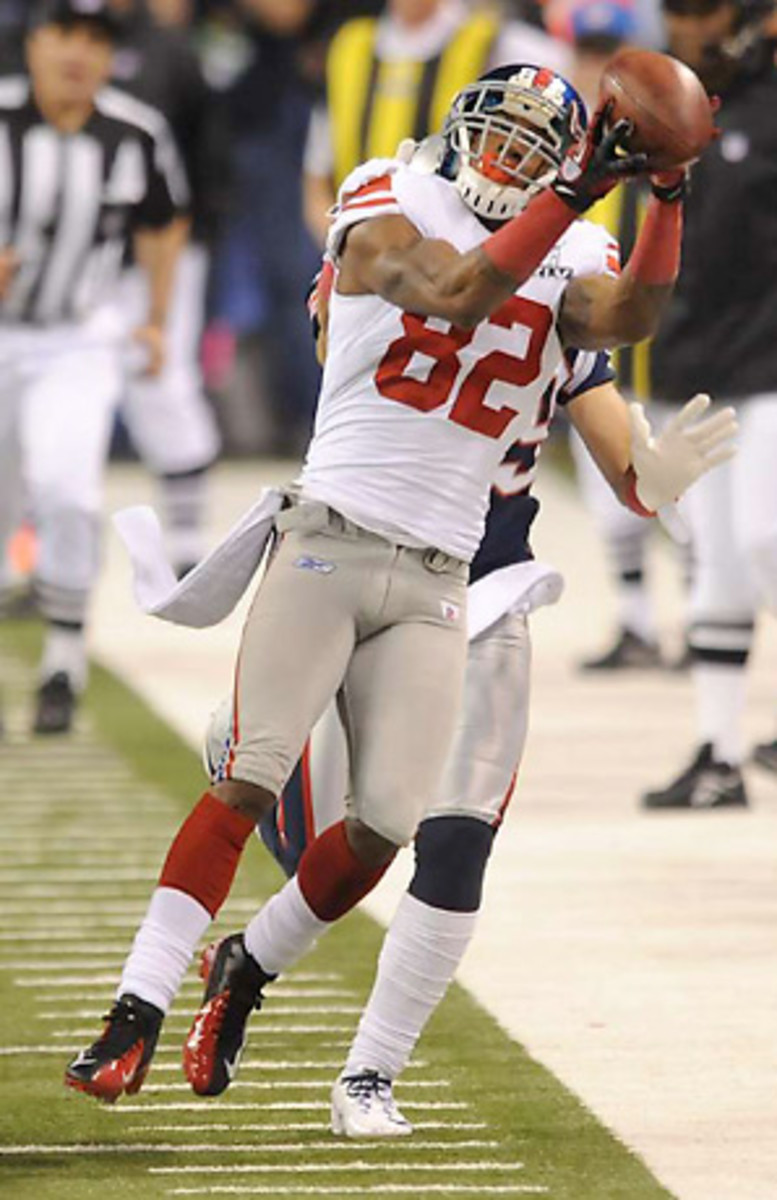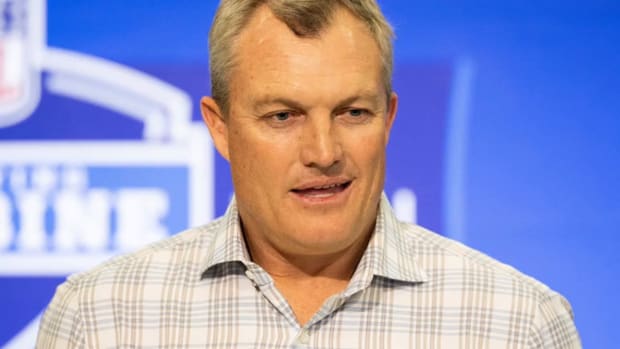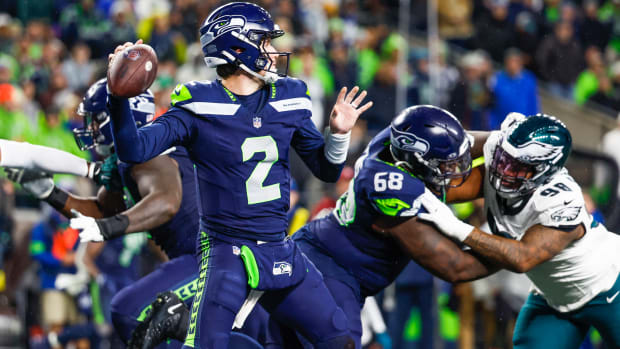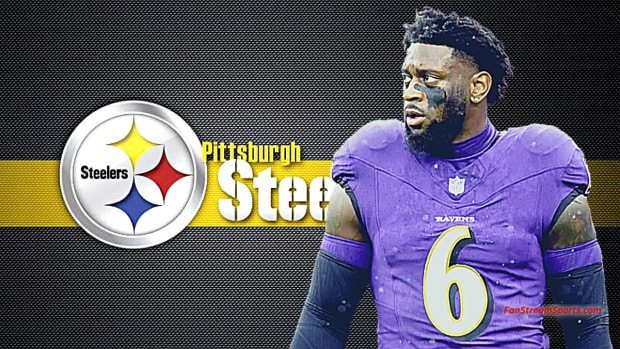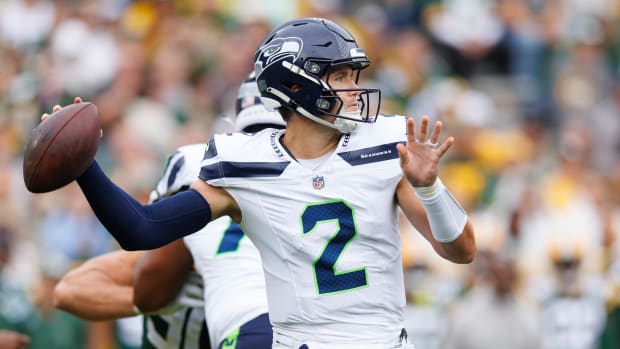WR market has thinned, but all styles of talent still available
When the offseason began, it looked like teams in need of pass-catching help would have plenty of options.
But with the start of free agency approaching, those options have thinned out considerably.
Wes Welker, Dwayne Bowe and DeSean Jackson have been tagged by the Patriots, Chiefs and Eagles, respectively. Stevie Johnson signed a new deal to stay in Buffalo. And the Steelers have the ability to match offers for restricted free agent Mike Wallace.
So who's left? Here's a breakdown of some of the wide receivers expected to be available and what they have to offer teams in need.
Vincent Jackson: Among the projected unrestricted free agents, he's the only true No. 1 option. The Chargers decided not to tag Jackson for a second straight season, and the market is set up nicely for him to cash in. He was one of three players (Victor Cruz and Jordy Nelson were the others) in 2011 to have at least 60 catches and average more than 18 yards per reception.
But Jackson, who totaled 1,106 yards and nine touchdowns last season, is more than just a downfield threat, and his versatility makes him an attractive option. According to Pro Football Focus, he lined up in the slot 13.6 percent of the time last season. Jackson's size (6-foot-5, 230) enables him to make catches in traffic when defensive backs are draped all over him, and 54 of his 60 receptions in 2011 picked up first downs. On the outside, he and Philip Rivers consistently hooked up on back-shoulder throws, and as the numbers indicate, Jackson is an elite vertical threat. He had 21 catches of 20+ yards, tied for fifth-most among wide receivers.
Jackson, who turned 29 in January, had some issues with drops -- six total, according to STATS.com -- but he made up for them by regularly making difficult catches and demonstrating great footwork near the sidelines. Off the field, he's been arrested twice on DUI charges and had a lengthy holdout in 2010. But on the field, he's a proven difference-maker, who will generate a lot of interest on the open market. The Redskins are reportedly ready to offer Jackson a large contract.
Brandon Lloyd: In 2010, Lloyd's eighth NFL season, he led the league in receiving (1,448 yards), while averaging 18.8 yards per catch. Only Wallace had more receptions of 20+ yards that year. But 2011 was a different story, as Lloyd started out with the Broncos before being reunited with Rams offensive coordinator Josh McDaniels, his head coach in Denver, in a trade to St. Louis. He totaled 966 yards and averaged 13.8 yards per catch.
Taking a closer look at the numbers, it's clear that Lloyd was hurt by inconsistent quarterback play. In five games with Sam Bradford, he averaged 4.8 catches and 70.2 yards per game. Over the course of a 16-game season, that translates to 77 catches and 1,123 yards. He had at least one catch of 20+ yards in each game with Bradford and scored three times.
There are two ways to look at Lloyd's career. The first is that 2010 was a fluke. Take away that season, and he's averaged just 14.3 yards per catch.
On the other hand, perhaps Lloyd, who turns 31 in July, realized his potential late and has several good years left. He dealt with shaky quarterback play in 2011, but still caught 70 balls and had 15 plays of 20+ yards.
I tend to take the latter view. If Lloyd lands in the right situation (such as back with McDaniels, this time in New England), he's capable of putting up big numbers. Even last year, he showed an outstanding ability to adjust his body while the ball was in the air and make high degree-of-difficulty catches. There are questions about him as a teammate, but in the right situation, Lloyd can be a reliable receiver, capable of stringing together multiple 1,000-yard seasons, playing on the outside and stretching the field.
Marques Colston: A seventh-round pick in 2006, Colston has built an impressive resume with a specific skill set. He works the middle of the field, provides a big target for Drew Brees and does a good job of holding onto the football, even when he knows he's about to get crushed. Colston's averaged 72.6 yards per game in six NFL seasons and has failed to reach the 1,000-yard mark just once. In 2011, he lined up in the slot 37.5 percent of the time, according to Pro Football Focus. The year before, that number was even higher (43.4 percent).
Colston has undergone microfracture surgery on each knee since 2009, but he still produced an 80-catch, 1,143-yard season with eight touchdowns in 2011. He had 21 third-down catches that converted first downs - tops among free-agent wide receivers, according to STATS.com. And Colston (6-4, 225) had 10 red-zone receptions, including four for touchdowns.
Football Outsiders keeps a stat called catch rate, which measures the percentage of passes completed when a specific receiver is targeted. Colston's catch rate was 75 percent, the best mark among wide receivers who were targeted at least 50 times last season. He and Brees developed a chemistry that was unmatched in terms of efficiency by any other tandem in the league. Because of Brees' accuracy, Colston often did not need to create a lot of space against opposing defensive backs.
Teams pursuing him in free agency will have to be confident that he can develop a similar comfort level with a new quarterback before offering up a big contract.
Reggie Wayne: The drop in his numbers last year was not surprising, considering Wayne was catching balls from Kerry Collins, Curtis Painter and Dan Orlovsky, instead of Peyton Manning.
Wayne, who turns 34 in November, produced 75 receptions and 960 yards -- his lowest marks since 2003. He did have 16 third-down catches that picked up first downs.
SI's Peter King reported last week that Wayne and Manning could look to team up in another city, and that would make a lot of sense. Wayne's catch rate with Manning from 2008-2010 was 65 percent, which dipped to 57 percent in 2011 despite the decrease in drops. He's not much of a downfield threat (12.5 yards per catch the past three seasons), but Wayne can be a reliable possession receiver in the right situation. And his durability has been impressive. Wayne's started every game for the Colts since 2003.
Robert Meachem: Coming off a 40-catch, 620-yard performance last season, Meachem (6-2, 210) is another one of Brees' targets who could be playing elsewhere in 2012.
If that's how things play out, Meachem will need to find a team that knows how to use his size and lets him take advantage of his best attribute, which is an ability to make plays when the ball's in the air. He has not been much of a factor after the catch, picking up an unimpressive 103 post-reception yards last season. But Meachem can make plays in the vertical passing game, with a healthy career average of 16.1 yards per reception. Ten of his 40 catches last season were made when he was at least 20 yards downfield, according to Pro Football Focus.
The catch rate mentioned above with Colston applies here too. Meachem caught 67 percent of the balls thrown his way last season. That number is likely to drop with a different quarterback. And while Meachem has good size, he was not a factor in the red zone last season. Brees completed 61 passes inside the opponents' 20, but only two went to Meachem.
Mario Manningham: To be fair, based on 2011, Manningham doesn't fit squarely into any one of these categories. There wasn't much to like about his regular-season performance last year. Even though Eli Manning was playing at a high level, Manningham averaged just 43.6 yards per game and 13.4 yards per catch (both three-year lows) to go along with an unimpressive 51 percent catch rate.
But he'll be remembered for his five-catch, 73-yard performance in the Super Bowl, which included the 38-yard over-the-shoulder grab with 3:46 left in the fourth quarter. Manningham scored in three of the Giants' four postseason games, including a pair of red-zone touchdowns.
Teams projecting what Manningham can be will focus on last year's playoffs and his regular-season performance in 2010. That year, Manningham averaged 15.7 yards per catch, totaled nine touchdowns and had a catch rate of 65 percent. His 13 receptions of 25+ yards ranked third among wide receivers. And 12 of Manningham's 60 catches were made 20 yards or more from the line of scrimmage, according to Pro Football Focus. Only Lloyd, Wallace, DeSean Jackson and Kenny Britt made more "stretch-the-field" receptions.
Manningham will be 26 at the start of next season and probably earned himself quite a bit of money with the strong playoff performance. He has been productive in stretches, but whichever team signs him will be banking on Manningham putting it all together for the long haul.
Pierre Garcon: Greg Cosell of NFL Films often points out that yards after the catch can be more a function of the quarterback than the wide receiver. Perhaps that makes it even more impressive that Garcon piled up 376 yards after the catch last season, tied for 12th among wide receivers, according to STATS.com.
Despite dealing with the same poor quarterback play as Wayne, Garcon (6-0, 210) set career highs with 70 catches and 947 yards. He showed the ability to make plays in different parts of the field -- on screens, slants and deep balls.
However, Garcon has not yet established himself as a consistent vertical threat. Just four of his 70 receptions were made when he was 20 yards or more downfield. In 2010, with Manning at quarterback, he had just five such catches.
Garcon struggled to hold onto the football in 2010, piling up nine drops, but that number shrunk to four last season. He will benefit from the thinned-out market, especially since he's only 25. But based on his body of work through four NFL seasons, Garcon's much more of a question mark than a sure thing.
Laurent Robinson: With Miles Austin missing six games last season, the Cowboys needed Robinson, and he answered the call, catching 54 balls for 858 yards and 11 touchdowns -- all career highs. Robinson did most of his damage outside the numbers, and he averaged more YAC per reception than teammates Dez Bryant and Miles Austin, according to Pro Football Focus.
Robinson averaged 15.9 yards per catch, had 12 receptions of 20+ yards and was highly productive in the red zone, with eight touchdowns from inside the opponents' 20.
His catch rate jumped from 45 percent with the Rams in 2010 to 68 percent with Tony Romo in 2011. Robinson was healthy and on the field for just 38 games in the previous four seasons, and he totaled just 1,000 yards prior to landing in Dallas. Keeping those things in mind, his best option might be to re-sign with the Cowboys.
Sheil Kapadia writes the Moving the Chains blog on Philly.com. You can follow him on Twitter @SheilKapadia and e-mail him at sheil.kapadia@gmail.com.
































